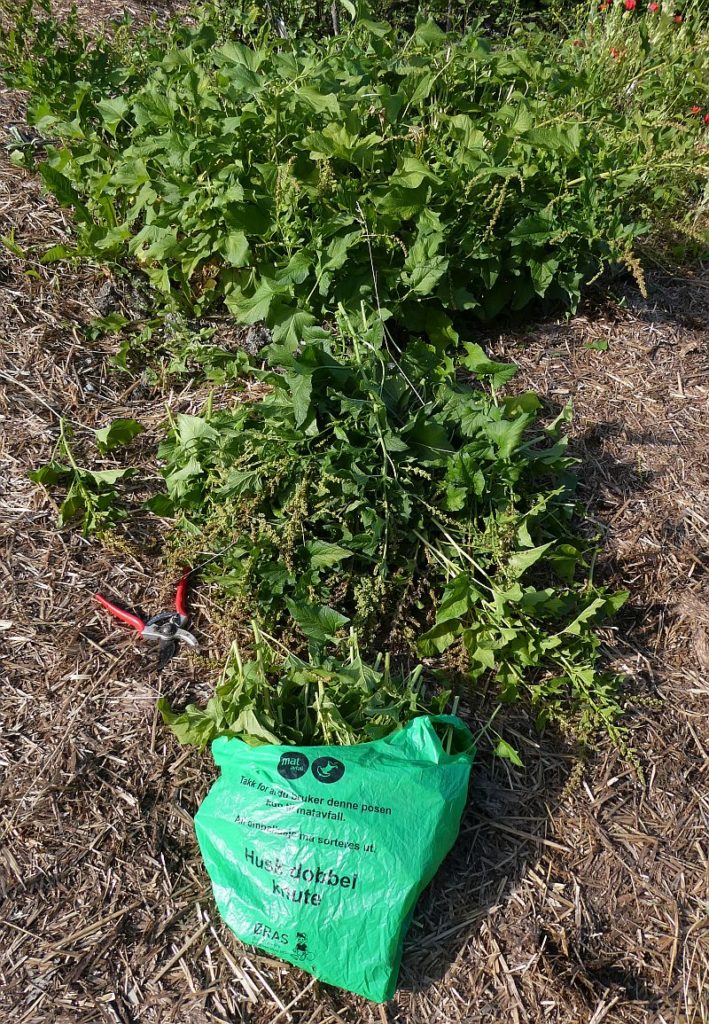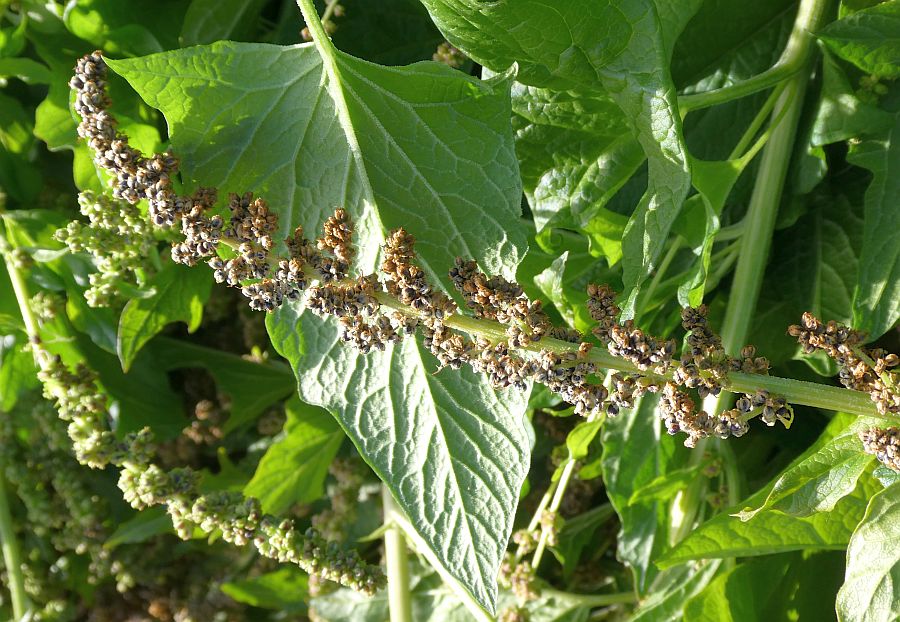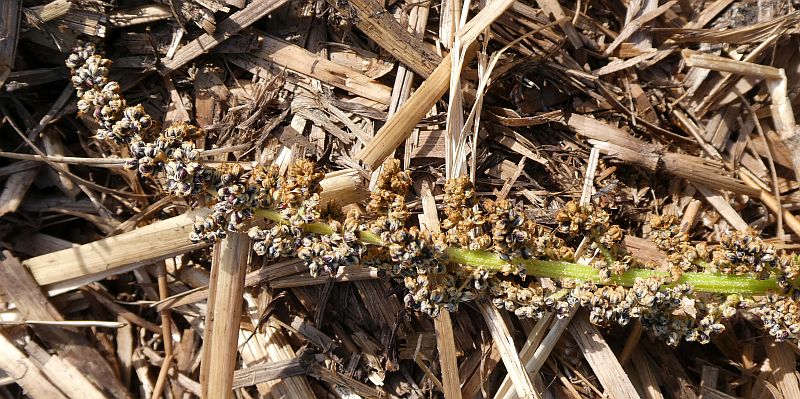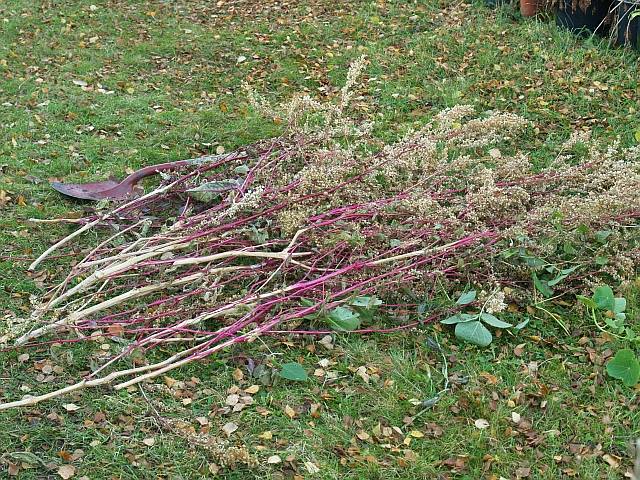At the Væres Venner community garden, I’ve planted 6 or 7 different Good King Henry (Chenopodium bonus-henricus; stolt henrik) plants from different sources. In my book you can read how this plant which is closely related to annual quinoa (Chenopodium quinoa), is probably the most promising perennial grain. Even in my cold climate, it can give two yields per season and the first yield is far ahead of annual grains here! I’m hoping that one of the varieties may have slightly larger seeds (the seeds are smaller than quinoa). The only drawbacks are that the seed are difficult to clean by hand. I winnow the seed and then do the final clean. Two of my 6-7 plants were harvested here. I’m dreaming of perennial grains being grown on a large scale in the future, even in my climate…there are many benefits including less energy needed for ploughing, less fertiliser and irrigation requirements and higher carbon sequestration than annual grains. However, we do urgently need breeding programs to try to produce improved larger seed varieties.









Stephen. I love your idea of a perennial quinoa… I’ve had that same idea for years but it hasn’t been until recent years that I have been nudged to do any genetic exploration into the bringing together of the many edible possibilities. …if you want to send me a few of the GKH seed I will send you back any F2 or other things for you to pass on or use personally, if anything of interest happens. …I always had trouble getting GKH to grow… is there a trick? …it would just sit there like a bump on a log , never made a seed stalk for me in past. …We have numerous frost/freeze resistant chenopodacea out here in the SW, and a number of them are quite free of saponins, make good salad greens… am exploring crossing possibilities …some, like the few crosses to strawberry blite I’ve gotten, have produced nothing of fruiting interest, and nothing of foliage interest. …the fruiting trait just seems to go up in smoke, never to reappear…but b.crosses to S blite could result in something, who knows.
I’ve always given GKH seed long stratification treatment outside (cool winters here mostly around 0C, but exceptionally down to -20C). I have records of sowing in January with germination in late May. However, I have one record of sowing on 6th May and I had germination by 23rd June, so maybe not necessary? It’s a mountain plant from southern Europe.
I’ll see if I can send you a mix of seed when I sort my seed pile!
Some interesting ideas there!
Thanks Stephen. …we’ll see where time takes us.
May the best happen.